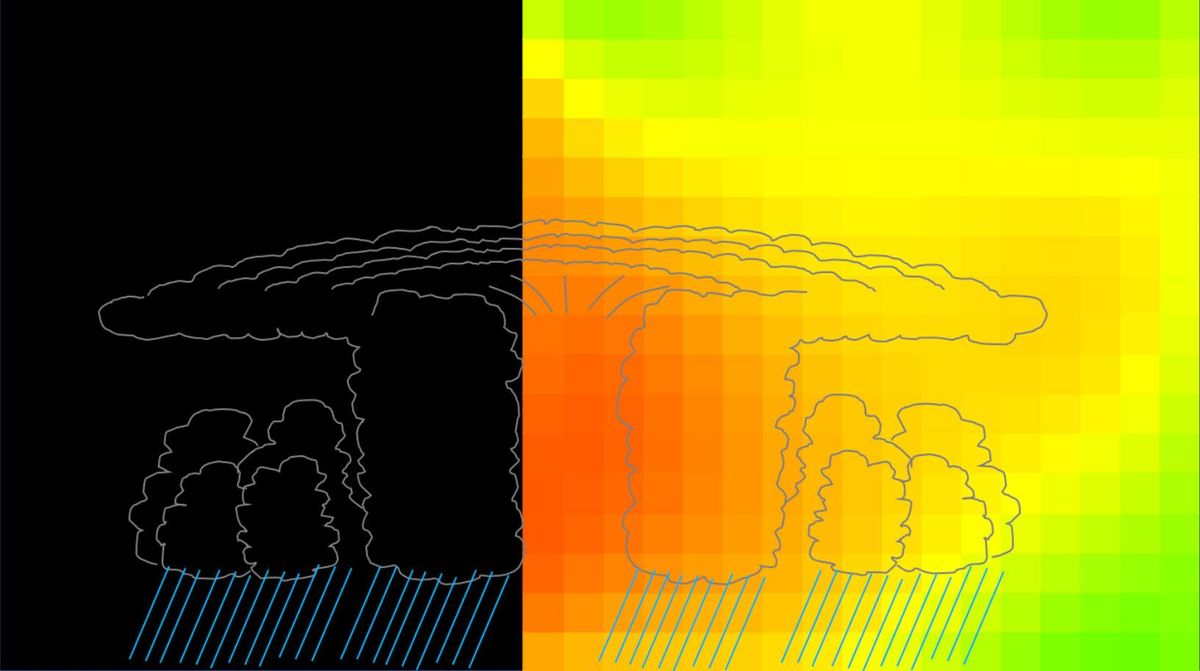Using exotic particles known as muons that regularly blast Earth, scientists can now scan deep inside hurricanes in 3D, peering into areas of the storms that are too difficult to see with conventional techniques. These findings suggest that muon detectors may lead to new and better hurricane early-warning systems, researchers say.
A muon is similar to an electron, except it weighs more than 200 times as much. That is about the difference between an adult person and a small elephant.
When high-energy particles from deep space known as cosmic rays hit Earth’s atmosphere, they can generate muons. Muons constantly shower Earth from every angle—approximately one muon hits every square centimeter of Earth every minute at sea level.
Muons often pass through matter easily, but dense objects or gigantic bodies can absorb or scatter them in a similar way to X-rays. By capturing a large number of muons passing through something, researchers can reconstruct an image of it, a technique known as muon tomography, also known as muography.
Scientists have used muography to analyze Fukushima’s melted nuclear cores, scan the Great Pyramid of Giza, and see deep inside volcanoes, tsunami-like waves, and shipping containers. Now, for the first time, a new study explored using muography to probe tropical cyclones (also known as hurricanes or typhoons, depending on the location).
Although satellite imagery and drone missions can peer at hurricanes, they face challenges gathering data on the 3D nature of air pressure and density inside tropical cyclones. These details are often critical to predicting how these storms might develop in the future.
The scientists had their array of muon detectors analyze eight tropical cyclones that approached Kagoshima in western Japan in 2016, 2019, and 2021. They found they could see air density and pressure variations in the hearts of these storms. “The warm cores of the cyclones were clearly imaged,” says study lead author Hiroyuki Tanaka, a physicist at the University of Tokyo.
The vertical and horizontal pressure variations the researchers detected are connected to wind strength. “The fact that the warm core was clearly imaged indicates that the wind-speed distributions inside a cyclone could be calculated,” Tanaka says. Calculating the wind-speed distribution inside a tropical cyclone may in turn help scientists estimate its power and predict where it might go, he says.
The researchers estimate that muon detectors must be located within 300 kilometers of storms to analyze muons zipping through them. Currently land-based and airplane-based muography devices exist, Tanaka says. “There are no ship-based ones thus far, but they are naturally possible,” he adds.
By combining computer simulations and muographic data, “we may be able to design a completely new kind of cyclone forecast system,” Tanaka says. He adds that future research may analyze storms at different scales, not only tropical cyclones but also more local weather conditions.
The scientists detailed their findings last month in the journal Scientific Reports.
- Harnessing Cosmic Rays to Peer Into Fukushima's Deadly Reactors ... ›
- Robotic Blimp Could Explore Hidden Chambers of Great Pyramid of ... ›
- Muon Scanning Finds Hidden Chamber in Great Pyramid of Giza ... ›
Charles Q. Choi is a science reporter who contributes regularly to IEEE Spectrum. He has written for Scientific American, The New York Times, Wired, and Science, among others.



